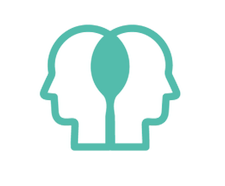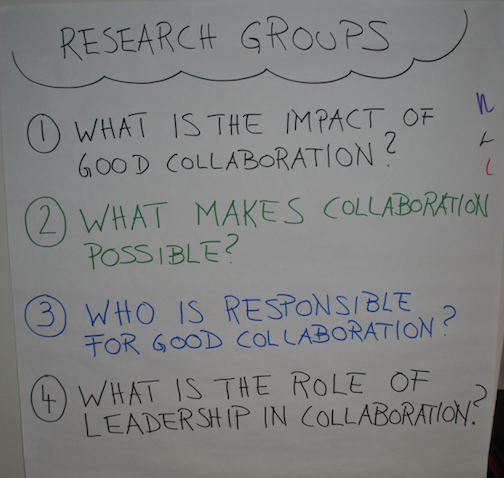The Practice of Collaboration 2: Knowledge Sharing and Engagement through “Research Groups”
Are you looking for new ways of sharing knowledge? Are you tired of power point presentations as a means to engage people? ecloo is using a method called Research Groups to help people in organizations share information, knowledge and perspectives. The original has been developed by Thiagi (www.thiagi.com). It can be adapted to different settings and any topic you want to learn more about. The key to success is not to find the right answers but to identify powerful questions that stimulate curiosity.
Purpose of Research Groups
Research Groups help people learn about each others’ knowledge and perspectives on a given topic and allow to gather the wisdom of the crowd in a short period of time (60 to 80 minutes). This method requires curiosity and good listening skills.
How Do Research Groups Work?
A group of people wants to explore a topic together. In an organizational context, topics such as vision, strategy, market or product development may be relevant. Choose a topic that interests people. For this blog post, we take the example of Collaboration and try to find out as many things as possible from everyone in the room about Collaboration. Instead of a classical way of inviting an expert who does a presentation on Collaboration, you collect the knowledge and wisdom on collaboration from the group as a whole. Why? Because chances are that 20 people in the room may know more about Collaboration than a single expert.
So you have chosen the topic of Collaboration and want to learn more about it. First, you identify a set of questions related to collaboration, let’s say the following 4:
You form 4 groups accordingly. Each group is responsible for one question. With 20 people, you would have 5 people in each group. First present the questions in plenary to make sure everyone understands the questions. Then you give the following instructions:
- Each group conducts individual interviews to make sure every person in the room has been interviewed once on the question the group is responsible for. If I am in group 1, I interview people who are not in my group on question 1.
- As a member of group 1, I not only interview but I also get interviewed on the 3 other questions.
- During the interviews, the interviewer is listening and taking notes so nothing gets lost.
- Once individual interviews have been completed, the groups meet again, collect the different answers and create a summary of what they found out.
- Each group presents the “research” results in plenary followed by discussion.
What is effective with this approach – in addition to the fact that you do not depend on one expert – is that it creates engagement: People in the room talk to people they may not know well. And they learn from one another. People get a chance to share their perspectives and they listen to what others have to say. Knowledge and perspectives are shared in a participatory and democratic fashion. This is why the energy level during the interviews and even during the presentations is usually very high. It is the kind of exercise that makes people feel heard and appreciated.
Applying this to Your Organization
Try it out in your organization. For example, instead of preparing a presentation on a given topic, prepare 3, 4 or 5 questions that will engage your group. The topic you choose can be a problem to be solved in your organization or a way of doing meetings more effectively. Write down the questions on a flip chart paper. The rest will run by itself. You will be amazed what treasures you will find by engaging people instead of putting them to sleep through yet another Power Point presentation. At the end, do not miss the opportunity to reflect on this way of interacting and sharing knowledge.


